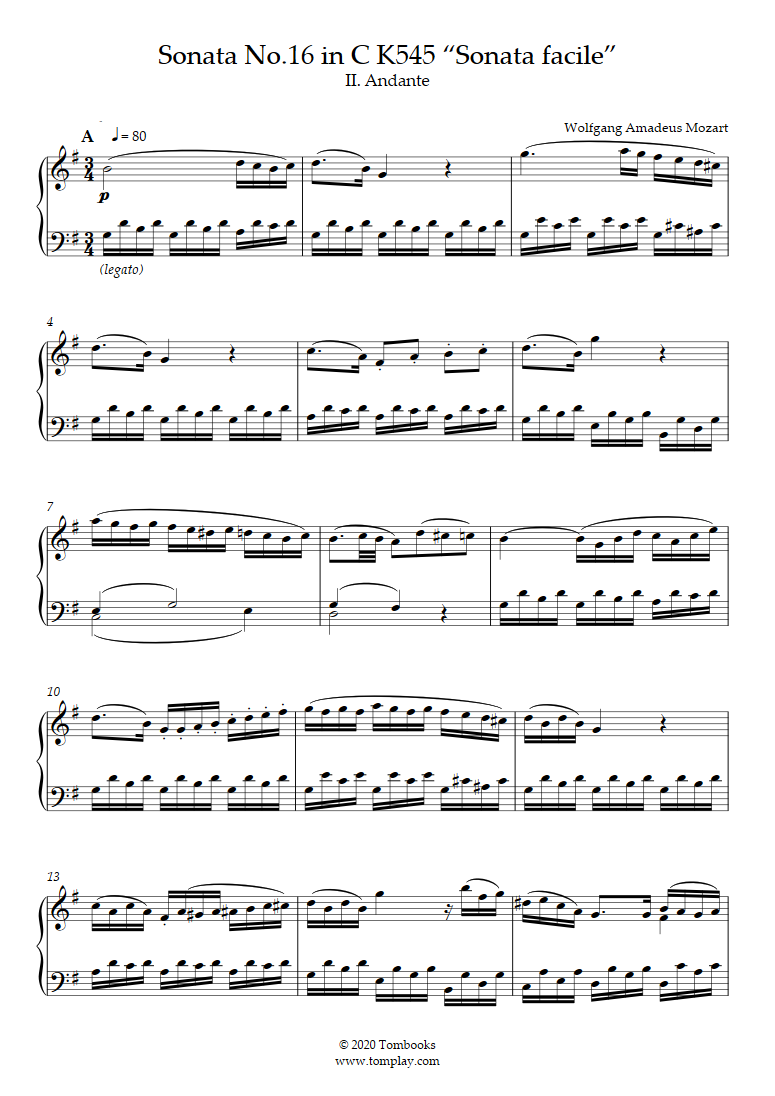

He made over 450 recordings including cycles of the symphonies of Bruckner, Mahler and Beethoven.īernard Haitink’s recording of Bruckner’s Symphony No. He was Commander of the Order of the Netherlands Lion, Knight of the Ordre des Arts et des Lettres in France, Honorary Companion of Honour in the UK and received honorary doctorates from the University of Oxford and the Royal College of Music.īernard Haitink’s legacy will be his unrivaled interpretations of the great symphonic and operatic masterpieces. He then became chief conductor of the Royal Staatskapelle Dresden (2002-4) and Principal Conductor of the Chicago Symphony (2006-10).īernard Haitink retired in 2019 after having conducted his final concert with the Vienna Philharmonic at the Lucerne Festival in Switzerland.īernard Haitink has received many awards and honours in recognition of his services to music including Musical America’s Musician of the Year and Gramophone’s Lifetime Achievement Award. Allegro by Wolfgang Amadeus Mozart, Henrik Mwe has a BPM of 123 and the key of C Major (Camelot.

In 1963 Haitink became the Orchestra’s sole principal conductor, and remained with the Orchestra for 27 years, until 1988.ĭuring those years Bernard Haitink was also principal conductor of the London Philharmonic Orchestra (1967-79), and music director at Glyndebourne Opera (1978-88) and was then appointed music director at the Royal Opera House, Covent Garden (1987 – 2002). 545, by Wolfgang Amadeus Mozart was described by Mozart himself in his own thematic catalogue as for beginners, an. Haitink first attracted attention in 1956 when he substituted for Carlo Maria Giulini, at short notice, for a performance of Cherubini’s Requiem with the Concertgebouw Orchestra.įollowing the death of the Concertgebouw Orchestra’s chief conductor, Eduard van Beinum, in 1959 Bernard Haitink and Eugen Jochum were appointed chief conductors of the Orchestra in 1961. He made his conducting debut with the Netherlands Radio Philharmonic Orchestra in 1954. (fragment of 1 movement completed by Maximilian Stadler) Allegro in G minor, K.312/590d. Piano Sonata No.18 in D major, K.576 ('Trumpet' or 'Hunt') Allegro in B-flat major, K.400/372a. Piano Sonata No.16 in C major, K.545 ('Semplice') Piano Sonata No.17 in B-flat major, K.570. And you might need a sweater.Bernard Haitink was born on 4 March 1929 in Amsterdam and studied violin and conducting at the Amsterdam Conservatory. A new version of Last.fm is available, to keep everything running smoothly, please reload the site. Piano Sonata No.15 in F major, K.533/494.
#WOLFGANG AMADEUS MOZART PIANO SONATA NO 16 DOWNLOAD#
Note that it will take you more than 24 hours to listen to the whole thing. Wolfgang Amadeus Mozart (composer 1756-1791) - Play or download MIDI files from Classical Archives (), the largest and best organized classical music site on the web. There is now a playlist of 715 of the most chill-inducing songs ever written. The next step was to compare those two matched pieces for music, looking at things like mood, tempo, and so on.įrom this analysis, they discovered that chill-inducing songs were “sadder, slower, less intense, and more instrumental than matched tracks.” They called this “sophisticated music,” which in this case means “relaxing, quiet, nondanceable, slow, nonelectric, and instrumental.” Examples include Prince’s “Purple Rain,” “Back to Black” from Amy Winehouse, and a number of versions Leonard Cohen’s “Hallelujah.” The trick was this matching song had to be roughly the same length and had to have achieved the same level of popularity. 545, by Wolfgang Amadeus Mozart was described by Mozart himself in his own thematic catalogue as for beginners. Then they took some Spotify data and matched each of these songs to another track by the same artist. Researchers Rémi de Fleurian and his colleague Marcus Pearce, went through dozens of previous studies and compiled a list of more than 700 songs that have been tagged as chill-inducing. In the end, the story behind the sonata is a mystery. Some new research is in from Queen Mary University of London. 545, is a piece of music for solo piano.It was composed by Wolfgang Amadeus Mozart.On 26 June 1788, he added the piece to his catalogue as 'a little Piano Sonata for beginners'.He may have written the piece for a pupil. Neuroscientists love studying these reactions because it offers insight into how the brain and the body process sounds we find pleasurable–a physical response scientists call “frisson.” Because, frankly, we’re still not sure why music can work in this way. War Practice Test 1 Questions 913: Wolfgang Amadeus Mozart: Piano Sonata No. 39.The exact circumstances of the works composition are not known. Mozart added the work to his catalogue on June 26, 1788, the same date as his Symphony No. We’ve all had the experience of getting chills and goosebumps from hearing a piece of music. 2 Questions 1620: Wolfgang Amadeus Mozart, Eine Kleine Nachtmusik, K525. 545, by Wolfgang Amadeus Mozart was described by Mozart in his own thematic catalogue as 'for beginners', and it is sometimes known by the nickname Sonata facile or Sonata semplice.


 0 kommentar(er)
0 kommentar(er)
